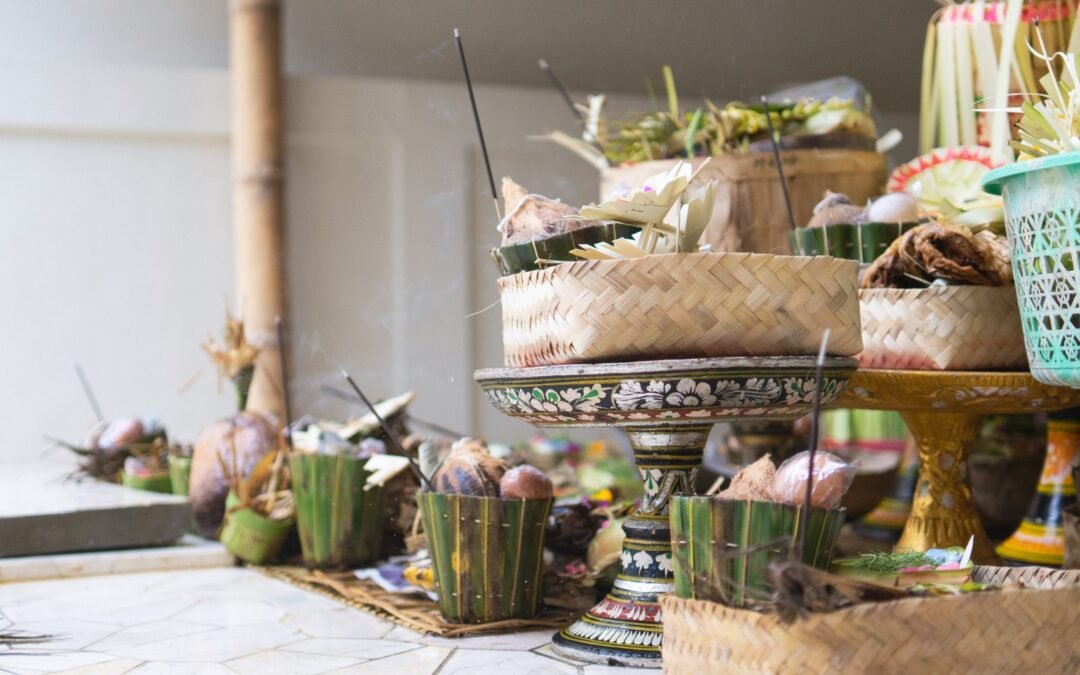In the spiritually-charged landscape of Bali, the veil between the world of the living and the realm of the ancestors feels thin. For the Balinese people, death is not an end but rather a transition, a sacred journey that marks the beginning of a soul’s return to the divine source. This deep, abiding connection to the ancestors is woven into the very fabric of Balinese culture, informing every aspect of daily life. From the colorful offerings that adorn family shrines to the elaborate cremation ceremonies that guide souls to the afterlife, the Balinese maintain an unwavering devotion to honoring and communicating with their departed loved ones. In this article, we’ll explore the beautiful, time-honored traditions that keep the ancestors alive in the hearts and minds of the Balinese people.
The Importance of Ancestor Worship in Balinese Hinduism Ancestor worship, or Pemujaan Leluhur in Indonesian, is a cornerstone of Balinese Hinduism. The Balinese believe that the spirits of their ancestors continue to play an active role in the lives of the living, offering guidance, protection, and blessings from the unseen world. By maintaining a strong connection to their ancestors through daily prayers, offerings, and rituals, the Balinese seek to honor the sacrifices and wisdom of those who came before them, and to ensure the continued flow of divine blessings in their own lives.
Keeping the Ancestors Close:
The Role of Family Shrines In every Balinese home, you’ll find a family shrine, or “sanggah,” dedicated to honoring the ancestors. These sacred spaces, often adorned with intricate offerings of flowers, incense, and small portions of food, serve as a direct link between the living and the departed. Each day, family members gather at the shrine to pray, present offerings, and commune with their ancestors, seeking their guidance and protection. By tending to these shrines with love and devotion, the Balinese keep the memory of their ancestors alive and invite their continued presence in the home.
Ngaben Cremation Ceremonies:
Releasing the Soul Perhaps the most well-known ancestral tradition in Bali is the Ngaben cremation ceremony. This elaborate, colorful ritual is believed to release the soul from the physical body, allowing it to ascend to the heavenly realms before eventually reincarnating into the earthly world. Ngaben ceremonies can be grand, communal affairs involving entire villages, or more intimate family gatherings. Regardless of scale, these ceremonies are imbued with a sense of joy, celebration, and gratitude for the ancestor’s life and teachings. The sight of ornate cremation towers, or “bade,” being carried through the streets is a powerful reminder of the Balinese belief in the cyclical nature of life and death.
Communicating with the Ancestors:
The ancestors are not silent, distant figures but active participants in the world of the living. Through mediumship practices, the Balinese seek to communicate directly with their departed loved ones, receiving guidance, warnings, and blessings from beyond the veil. In many villages, there are respected mediums, or “balians,” who serve as intermediaries between the worlds, channeling messages from the ancestors during sacred ceremonies and rituals. This ongoing dialogue between the living and the dead reinforces the Balinese belief in the continuity of the soul and the enduring power of familial bonds.
The Balinese reverence for their ancestors is a beautiful, deeply moving aspect of their culture, one that invites us to reconsider our own relationship with those who have passed on. By honoring the wisdom, sacrifices, and enduring presence of their forebears, the Balinese weave a rich tapestry of love, memory, and spiritual connection that transcends the boundaries of life and death. As we witness the vibrant, soulful traditions of ancestor worship in Bali, we are reminded of the eternal nature of the bonds we share with those we love, and the power of keeping their memory alive in our hearts and actions. The Balinese way of honoring the ancestors offers a profound lesson in the art of remembrance, one that invites us to find comfort, guidance, and inspiration in the enduring love of those who have come before us.

